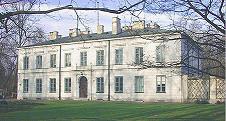Krzemionki Opatowskie - palący problem konserwatorski
Krzemionki Opatowskie - an Urgent Conservation Problem
Author(s): Wojciech BorkowskiSubject(s): Fine Arts / Performing Arts
Published by: Krajowy Ośrodek Badań i Dokumentacji Zabytków
Keywords: Krzemionki Opatowskie; Ostrowiec Świętokrzyski; flint mine; Neolithic; Bronze Age; archaeology; workshops
Summary/Abstract: The complex of historical flint mines in Krzemionki Opatowskie near Ostrowiec Świętokrzyski forms a unique object. An area of more than 30 hectares contains over 5 000 flint mines from the Early Stone (Neolithic) Age and Early Bronze Age. The mining field in Krzemionki is the shape of a gigantic parabola some 5 kms. long. Unfortunately, at present, this unique object faces numerous threats. The surface weathering of the rock mass comprises the most essential peril for the subterranean headings of the mines. Rain water permeates the fissures of the limestone and, after freezing, expands the cracks, making it possible for the roots of trees growing on the Krzemionki mines to penetrate deep into the rock mass. In 1984–1985, subterranean route no. 1 was re–opened to visitors. Indispensable mining work was conduced; the tunnel roof became supported by closely arranged pairs of steel pillars, isolated from the damp air by means of cement mortar. The introduced method of bonding the rock mass resorted to a binder composed of cement mass and Cerasit , a ready–made binder used, i. a. for ceramic tiles. This method produced good results, and enabled the reduction of the impact of weathering in the region of the tourist route. In the direct vicinity of the above mentioned route there lies an area where during the 1930s the local peasants destroyed fragments of the rock mass together with the mines. The roofs of the remaining chambers are so cracked that they threaten to collapse at any moment. Vegetation on the surface of the terrain in question constitutes an indubitable attraction of the Krzemionki reservation. Unfortunately, the roots of large plants penetrate deep into the rock mass, intensifying the weathering process. They also damage the mine slag heaps and flint processing workshops located on the surface.
Journal: Ochrona Zabytków
- Issue Year: 1999
- Issue No: 1
- Page Range: 15-20
- Page Count: 6
- Language: Polish

